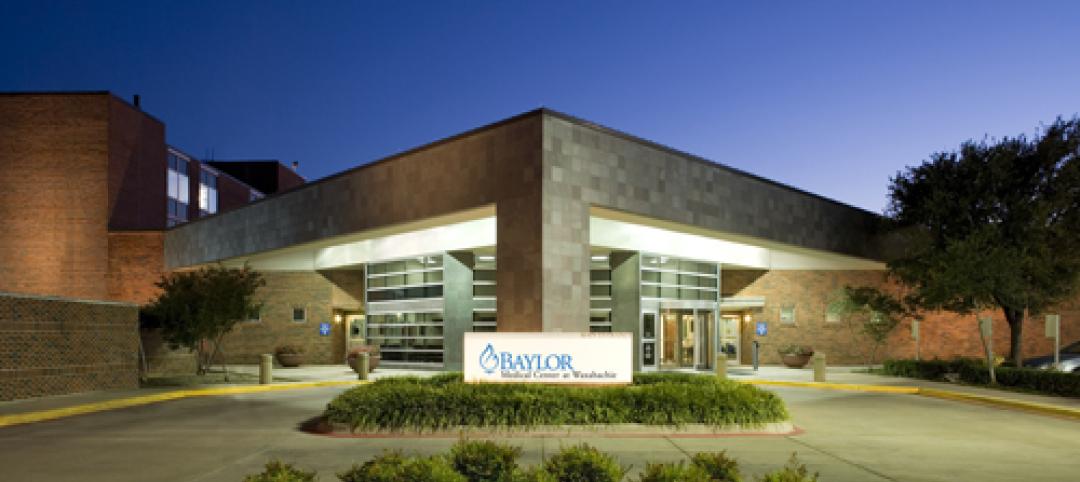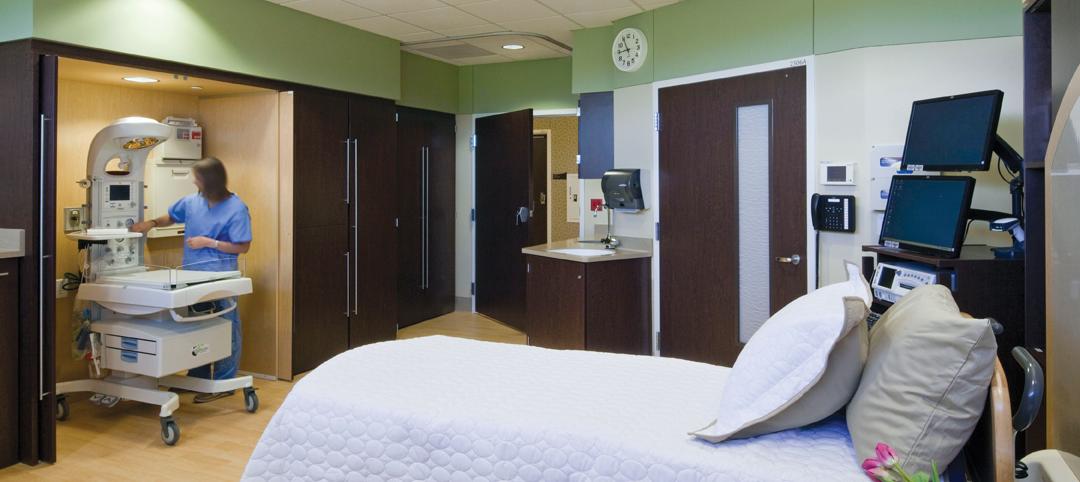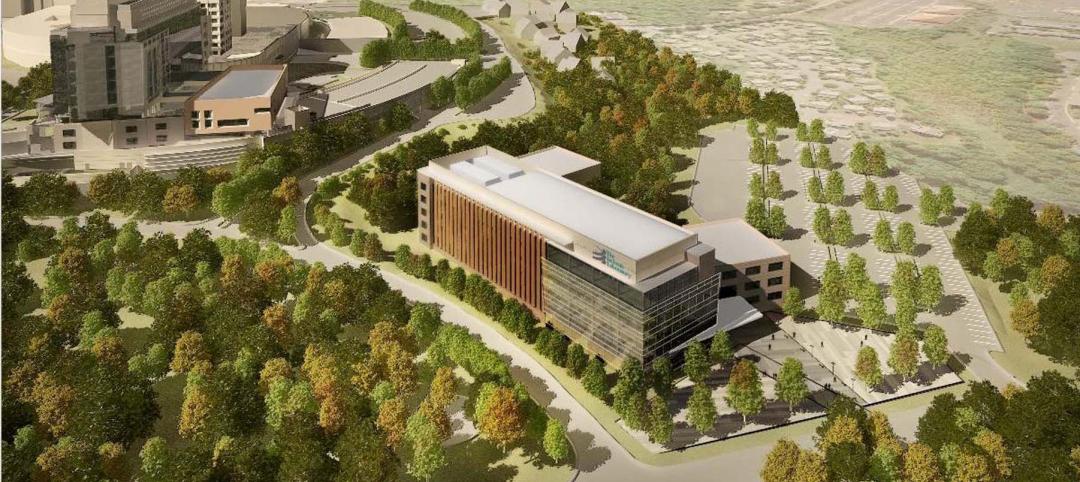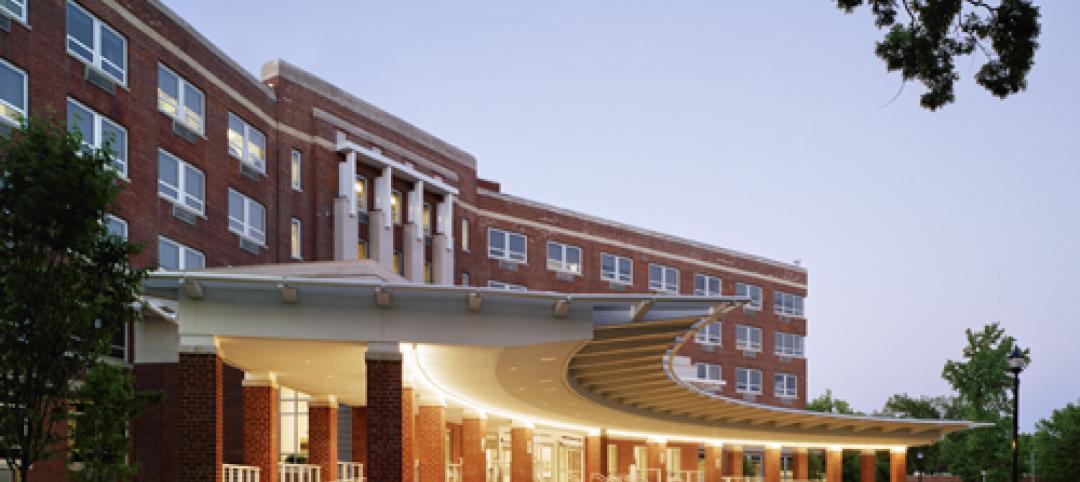After his initial tour of the dilapidated 1850s-era Battle House Hotel, Ron Blount, construction manager with Retirement Systems of Alabama, said to his boss: “You need a priest more than you need a contractor.” Those words were more prescient to RSA's restoration of the historic Mobile landmark than he could have known at the time.
In its glory days, Battle House Hotel, built in 1856, was frequented by Mobile's high society and visited by historical figures such as Jefferson Davis and presidential hopeful Stephen Douglas, who stayed at the hotel the night he lost the 1860 election to Abraham Lincoln. It was also the site of numerous high-society debutante balls and Mardi Gras celebrations.
The historic hotel, deeply cherished by the people of Mobile, twice survived raging fires, and its shell had to be rebuilt in 1908. But those trials were nothing compared to the wrath of five hurricanes and a tropical storm that struck during the building's recent reconstruction.
The restoration of the 278,000-sf, 238-room Battle House was part of a more wide-scale development that included the RSA Tower, a modern 35-story structure, and a parking garage. About a year after the project kicked off in 2004, the mightiest of the storms, Hurricane Katrina, roared through Mobile that fateful August of 2005, leaving much of the Gulf Coast city, including the construction site, under water. In the storm's wake, construction crews had to evacuate the site and work came to a halt.
When authorities gave the OK to return to the site, the Building Team found the entire basement and part of the first floor submerged. The roof and some windows suffered moderate damage. First-floor construction offices were partially flooded, office furniture was ruined, and important files were lost. Project managers spent the first two weeks after the storm working from the sidewalks of downtown Mobile while the building was dried out.
“Everywhere you looked, people were working to clean out the mess made by the flood,” said Deborah York Geiger, communications director with general contractor White-Spunner Construction, Mobile, Ala. “Restaurant owners in the area cooked what food they could and gave it away to the workers. There was no electricity in most places, and conditions were horrible, but everyone pulled together to get the project moving again.”
Diesel-powered pumps were brought in to pump out the water, and workers had to remove several feet of mud and silt. Equipment, materials, and manpower were in short supply or unavailable for the first 7-10 days following Katrina. Crews performed safety surveys and damage assessments in a frantic effort to re-establish the viability of the job site.
Once restarted, the project required almost five months to correct damaged work. Flooded conduits, controls, motors, electrical panels, metal studs and walls, saturated fireproofing of structural elements, and duct work—all had to be torn out and replaced.
Serious deterioration from excessive exposure to moisture at the base caused the west wall of the Crystal Ballroom to fail and lean. Plaster elements on this wall—some of the most decorative and thematically significant of this centerpiece room—were in danger of being lost. The Building Team stabilized the wall so that the plaster elements could be removed and stored, then constructed a new wall and returned the precious plaster elements to their place of honor.
The project required top craftsmanship and attention to period detail, including preserved mantles, refinished original herringbone wood floors, marble floors and stairways, decorative plaster, stained glass, and window casings. Skilled craftsmen capable of restoring these details are scarce enough under normal conditions, no less under the severe stress caused by Katrina. Stanton Glass, Waco, Texas, was brought in to restore stained glass elements.
During the demolition and stabilization of the interior finishes, project managers determined that significant original plaster elements could be saved, refurbished, and supplemented by carefully restabilizing the skeletal steel framework and support wires from behind. The plaster work proved to be extremely tedious, requiring patching wire penetrations in tight spaces; 40% of the original plaster was saved, which provided a further basis for replication of the plaster.
One plaster restorer with fond memories of the Battle House postponed retirement in order to work on the project. Richard DiStefano, who worked in the masonry trades for more than 50 years, originally was hired to work on the project's tile and marble—but that work was delayed, so instead of joining his wife in Florida and beginning his retirement, he passed the time by assisting with the plaster work. He even made some of his own molds for the intricate work.
At the same time that it was rebuilding the hotel, White-Spunner was working on the interiors of floors two to seven of the adjoining tower. These floors would serve as suites, meeting rooms, kitchen space, and a new grand ballroom for Battle House. All egress, sequencing of access activities, temporary and permanent utilities, and prime scheduling had to be coordinated through White-Spunner.
Six wall murals are under commission by the artist Pietro Angel Palladini for the Crystal Ballroom. They will depict significant historical events in Mobile's 300-year history.
Having endured Katrina and several other devastating storms, the people of Mobile got a boost from the project. Six hundred tickets for the grand opening gala in May sold out in two days, and hundreds showed up for the lighting of the tower spire. The next day, public tours of the grandly restored hotel attracted 5,000 rightfully proud citizens.
Related Stories
| Mar 21, 2012
Iowa’s Mercy Medical Center’s new Emergency Department constructed using Lean design
New Emergency Department features a "racetrack" design with a central nurses' station encircled by 19 private patient examination rooms and 2 trauma treatment rooms.
| Mar 19, 2012
HKS Selected for Baylor Medical Center at Waxahachie
Baylor Medical Center at Waxahachiewill incorporate advanced technology including telemedicine, digital imaging, remote patient monitoring, electronic medical records and computer patient records.
| Mar 1, 2012
7 keys to ‘Highest value, lowest cost’ for healthcare construction
The healthcare design and construction picture has been muddied by uncertainty over the new healthcare law. Hospital systems are in a bind, not knowing what levels of reimbursement to expect. Building Teams serving this sector will have to work even harder to meet growing client demands.
| Feb 29, 2012
Construction begins on Keller Army Community Hospital addition
The 51,000 square foot addition will become the home for optometry, ophthalmology, physical therapy, and orthopedics clinics, as well as provide TRICARE office space.
| Feb 28, 2012
More than 1,000 have earned EDAC certification since 2009
Milestone achieved as evidence-based design becomes a top 2012 strategy for healthcare organizations.
| Feb 28, 2012
McCarthy completes second phase of San Diego’s Scripps Hospital
Representing the second phase of a four-phased, $41.3 million expansion and remodeling project, the new addition doubles the size of the existing emergency department and trauma center to encompass a combined 27,000 square feet of space.
| Feb 27, 2012
Research Institute at Texas Children’s Hospital building receives LEED Gold
Innovative and sustainable design reflects best environmental building practices.
| Feb 22, 2012
CISCO recognizes Gilbane for quality construction, design, and safety
The project employed more than 2,000 tradespeople for a total of 2.1 million hours worked – all without a single lost-time accident.
| Feb 14, 2012
The Jackson Laboratory announces Gilbane Building Co. as program manager for Connecticut facility
Gilbane to manage program for new genomic medicine facility that will create 300 jobs in Connecticut.
| Feb 13, 2012
WHR Architects renovation of Morristown Memorial Hospital Simon Level 5 awarded LEED Gold
Located in the Simon Building, which serves as the main entrance leading into the Morristown Memorial Hospital campus, the project comprises three patient room wings connected by a centralized nursing station and elevator lobby.
















